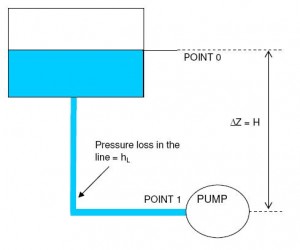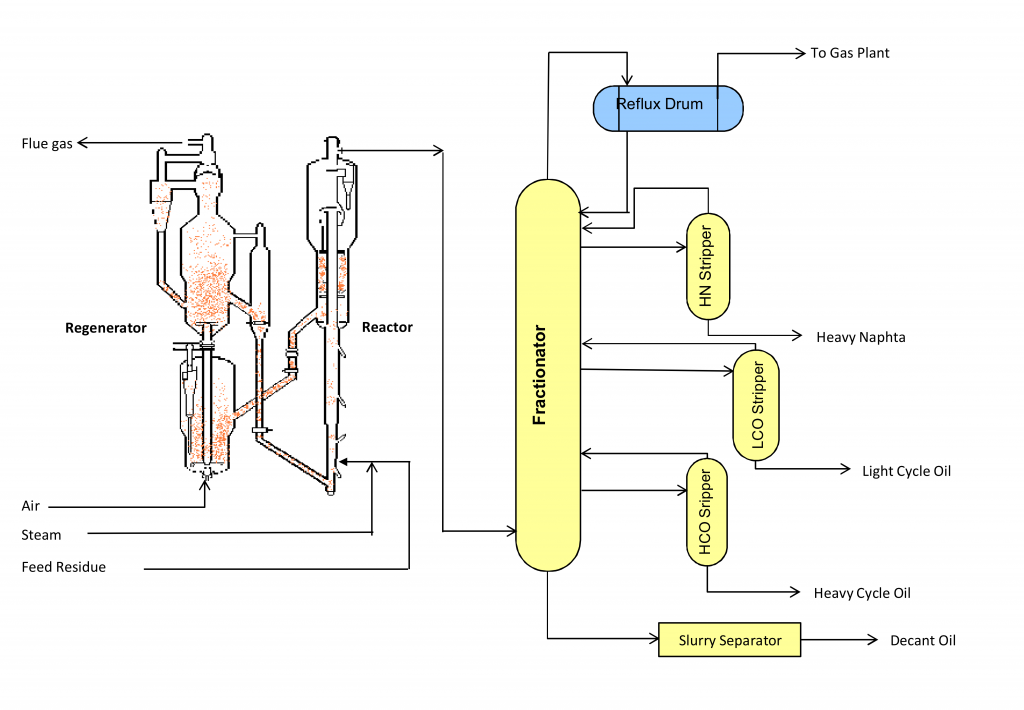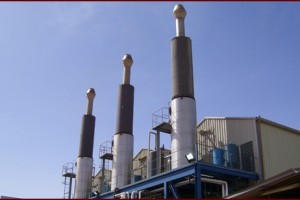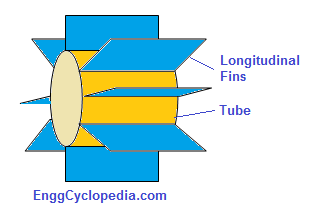NPSH for pumps stands for Net Positive Suction Head. It is a fundamental parameter used in the evaluation of centrifugal pumps. It represents the pressure that a fluid experiences on the suction side of the pump. NPSH is a critical factor in determining the performance and reliability of a pump. Inadequate NPSH can lead to cavitation, which can cause damage to the pump and decrease its efficiency. Therefore, understanding NPSH in the operation of centrifugal pumps is critical for ensuring optimal pump performance and reliability.
Table of content:
NPSH definition
Importance of pump NPSH
NPSHr (NPSH required)
How to measure NPSHr?
NPSHa (NPSH available)
NPSHa Calculation
NPSH margin
NPSH definition
NPSH for pumps can be defined as the difference between liquid pressure at the pump suction and liquid vapor pressure, expressed in terms of the height of the liquid column. The suction head is the term used to describe liquid pressure at pump suction in terms of the height of the liquid column. When vapor pressure is also expressed in terms of the equivalent height of the liquid column, and subtracted from the suction head, the difference is npsh available at the pump suction.

where, hL is the head loss between 0 and 1,
p0 is the pressure at the water surface,
pV is the vapour pressure (saturation pressure) for the fluid at the temperature T1 at 1,
Δz is the difference in height z1 − z0 (shown as H on the diagram) from the water surface to the location 1,
and ρ is the fluid density, assumed constant, and g is gravitational acceleration.
Importance of pump NPSH
If the NPSH available at pump suction falls below the required head (NPSHr), there is a risk of formation of vapor bubbles at the pump suction. Presence of vapor in the pump suction can lead to several problems such as - pump cavitation, damage to impellers, dry running of pump etc.
However, these problems can be prevented by ensuring that the NPSHa remains sufficiently above NPSHr specified by the pump manufacturer. This can be done when designing the pumping system. Factors such as elevation of the pump, suction piping, inlet tank etc. are important determinants for the available net positive suction head.
NPSHr (NPSH required)
A pump can only accept fluid at suction which is above a certain lower limit. This lower limit is specified by the pump maker and it is referred to as the NPSH required.
The NPSHr is a characteristic of a pump. It is typically provided by the pump manufacturer and is based on their testing and calculations. It represents the minimum suction pressure required for the pump to function properly and prevent the occurrence of flashing and cavitation.
NPSHr for pump depends on Pump design, Pump size, RPM and Operating conditions.
How to measure NPSHr?
To estimate NPSHr, you would need to know the pump's specifications and the properties of the fluid being pumped, such as its vapor pressure and temperature. Then, using this information, you can calculate the NPSHr required for the pump to operate properly under those conditions.
The NPSHr is determined through a test on a closed-loop system. The test involves measuring the flow rate, total head, and power consumption of the system. A vacuum pump is used to create a low head at the pump's suction. The pressure at the suction tank is gradually decreased until a 3% drop in total head is observed. At this point, the NPSH is calculated and recorded as the NPSHr for that operating point.
The test is conducted at various operating points, and heated coils are used to adjust the water temperature and vapor pressure as needed. Thus, the NPSHr is determined based on a 3% total head drop criteria.
It is recommended to have a 15% margin or 5 feet of absolute water above the NPSHr.
NPSHa (NPSH available)
NPSHa stands for Net Positive Suction Head available and represents the total amount of fluid pressure available on the suction side of a pump, at a particular operating point. It takes into account the pressure at the suction flange, the velocity head, and the elevation head of the fluid. In simpler terms, NPSHa is the amount of pressure available to push the fluid into the pump, and it is critical for preventing cavitation in centrifugal pumps.
The NPSHa is a characteristic of a system that is determined by the setup of the suction side. It is calculated by subtracting the vapor pressure of the fluid being pumped from the pressure on the suction side.
NPSHa Calculation
Normally the NPSH required by the pump at its suction (NPSHr) is specified by the pump manufacturer. Hence when you design a pumping system, you would most likely need to calculate the NPSH available (NPSHa).
Check step by step calculation of the available NPSH at the pump suction using sample problem.
Problem Statement
Estimate the NPSHa (Net Positive Suction Head Available) for a pumping system which is designed to pump 200,000 kg/hr of water. The water stream is available from a storage tank which operates at atmospheric pressure and 250C.
Minimum liquid level in the storage tank above pump suction nozzle is kept as 3m. Suction line is 6″ in size and 10m long.
The discharge from pump is to be sent to another vessel with a top connection for water inlet. The maximum height for the 6″ discharge line above the pump discharge nozzle is 12m. The discharge vessel operates at a pressure of 3 barg. There is no control valve in the discharge line. Discharge line to be assumed 100m long considering all the fittings and valves.
Solution
This sample problem can be solved by following these steps.
Step1: First physical properties (density, viscosity, vapor pressure etc.) of the process fluid (water in this case) must be determined at given operating pressure and temperature conditions.
Using EnggCyclopedia’s Liquid Density Calculator, water density at 250C =994.72 kg/m3
Using EnggCyclopedia’s Liquid Viscosity Calculator, water viscosity at 250C =0.90 cP
Using EnggCyclopedia’s Vapor Pressure Calculator, water vapor pressure at 250C =0.032 bar
Other adequate reference sources may be used for determination of the physical properties depending on design basis of the project.
Step2: The second step of NPSHa calculation is to determine the frictional pressure loss in the suction line to the pump.
EnggCyclopedia's pipe pressure drop calculator for single phase flow can be used for this pressure loss calculation. For help regarding the use of this calculator, refer to solved example for line sizing. In the present case, the pressure drop for 6″ suction and discharge lines is around 5 bar/km. For 10m suction line the pressure drop becomes 0.05 bar.
If details such as length of the suction line or line size have not be finalized, a suitable and conservative suction line pressure drop should be assumed. Other proprietary software or manual calculations may also be used to determine the suction line frictional pressure drop.
For suction line strainer, pressure drop can be calculated using EnggCyclopedia’s Strainer pressure drop calculator. For this example, the strainer pressure drop is around 0.09 bar. In case of an existing strainer the pressure drop may actually be measured using pressure differential indicators on the pump suction strainer. In case of new strainers being purchased, the strainer manufacturer can give a conservative value for maximum possible pressure drop across the strainer. This value can be used for pump sizing calculation and NPSH calculation.
Step3: Now you can easily calculate the available NPSHa using the equations from above.
po = 1.013 bar (atmospheric pressure - Problem Statement)
pv = 0.032 ba (water vapor pressure at 250C - Step1)
ρ = 994.72 kg/m3 (water density at 250C - Step1)
ΔZ = 3 m (minimum liquid level in the suction tank above the pump suction nozzle - Problem Statement)
hL = head loss in the suction line
= pressure loss / ρg
= 0.05 × 105 / (994.72×9.81)
= 0.5124 m
Substituting all these values in the NPSHA equation,
NPSHa = (1.013 - 0.032)×105/(994.72×9.81) + 3.0 - 0.5124 = 12.54 m
Thus net positive head available at the pump suction (NPSHa) is 12.54 m.
For more clarity on the method, click the given button to check another example where NPSHa is calculated for a pumping system.
If you want to quickly try out how the NPSHa equation works, Click the button to check out EnggCyclopedia's Pump Sizing calculator.
Also check detailed pump sizing calculations using sample problem in EnggCyclopedia's Pump Sizing calculator.
NPSH margin
The NPSH margin describes the safety factor by which NPSHa must exceed NPSH2 to avoid cavitation. It can be quoted in two ways:
- As a ratio of NPSHa to NPSHr. For example, an NPSH margin ratio of 1.1 indicates that NPSHa is 10% greater than NPSHr.
- As the difference between NPSHa and NPSHr. As a rule of thumb, it is necessary to ensure that the NPSH margin is 0.5m or higher (that is: NPSHa = NPSHr + 0.5m). A margin of 0.5 to 1 meter is usually required to account for factors such as temperature changes, atmospheric pressure, and friction loss over time. Some systems, such as those using sealless pumps, may require a greater margin due to the potential for unbalancing and bearing failure caused by even minor cavitation.
Both methods are in common use but, for higher energy pumps where NPSHr may be large, a ratio is more commonly used.




